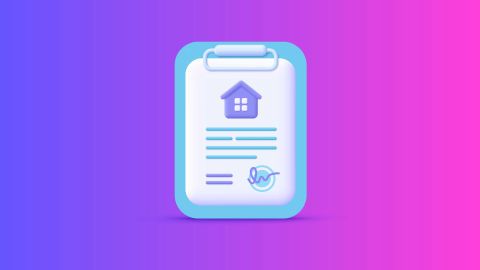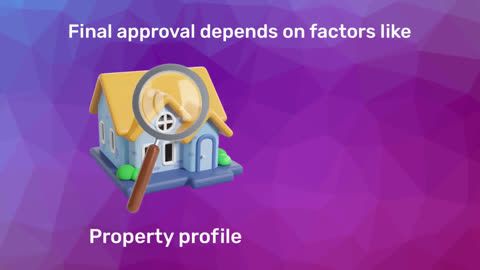Land ownership in India is a complex matter, but understanding key documents like Khasra and Khatauni can make it easier. These records serve as vital proof of land ownership and are essential for any land-related transactions. In this guide, we will explain what Khasra and Khatauni are, their significance, and how to access them online.
What is Khasra?
Khasra is a land record document used in India to indicate the specific details of agricultural land. It is like a record of each plot of land, showing the boundaries, area, and ownership details. The Khasra number helps identify each piece of land within a specific revenue village. This record is updated regularly by the local authorities to reflect any changes in land ownership, use, or status.
For example, if you own agricultural land, your Khasra will provide a detailed description, including:
What is the Purpose of Khasra Number?
- Plot number: Each plot in a village is assigned a unique Khasra number.
- Landowner’s name: The name of the person who owns the land.
- Area: The size of the land.
- Boundaries: The borders of the land are specified.
- Type of land: Whether it is used for agriculture, residential, or other purposes.
Khasra is an important document for anyone buying agricultural land. It can help potential buyers confirm the exact location, size, and ownership of a plot before making any financial decisions. Furthermore, the Khasra record is often used for legal purposes and can be referred to in case of disputes regarding land ownership.
What is Khatauni?
Khatauni is a critical land document that consolidates the details of land ownership within a specific village. It includes a summary of all landholdings of a particular individual or family. In simple terms, it is the record of rights for landowners, and it contains the names of individuals who own agricultural land in a particular village.
A Khatauni includes the following information:
- Name of landowner: The primary person who owns the land.
- Details of the land: The plot number, area, and boundaries of the land.
- Revenue paid: Information on the tax or revenue paid to the government for owning the land.
- Ownership status: Whether the land is owned outright or under some legal dispute.
The Khatauni document is used as evidence of landownership. It is a crucial piece of information that verifies who owns the land and is involved in determining property rights. It also serves as a valuable record for authorities when land is being sold, inherited, or transferred.
Importance of Khatauni and Khasra in property transactions
Both Khasra and Khatauni are important documents when it comes to property transactions. These records serve as proof of ownership and can be crucial in legal matters. Here is why they matter:
- Property verification: When buying agricultural land or property, the Khasra and Khatauni documents verify the legitimacy of the sale. They confirm the boundaries, ownership, and tax details of the land.
- Dispute resolution: In case of any dispute regarding land ownership, these documents can be used in courts to resolve the issue.
- Loan approval: Banks and financial institutions, such as Bajaj Housing Finance, often require land documents like Khatauni and Khasra before approving loans for property purchases.
- Tax payment records: The Khatauni shows whether taxes have been paid on the property, which can be crucial for maintaining ownership and securing future claims.
Who Assigns Khasra Number?
The local revenue department or land records authority assigns the Khasra Number to each agricultural land parcel in rural areas. This unique identifier helps in maintaining land records and tracking ownership details for legal and administrative purposes.
Difference between Khasra and Khatauni
Though both Khasra, and Khatauni are crucial documents for landowners, they serve different purposes:
- Khasra: Refers to a specific piece of land, typically agricultural, and contains information on its boundaries, size, and use.
- Khata: Refers to the registration of land in local municipal records. It consolidates details of multiple landholdings under one individual’s name.
- Khatauni: A document summarising all landholdings of a person in a specific area or village. It includes details like ownership, land type, and tax payments.
While Khasra identifies individual plots, Khata and Khatauni give a broader perspective of ownership and registration.
How to check Khasra Number/Khatuni Number/ Khata Number?
In today's digital age, many states in India have made it easier to access land records online. Checking your Khatauni online is a quick and efficient way to verify land ownership details without needing to visit local authorities.
Here is how you can check your Khatauni online:
1. Visit the official land records website: Most Indian states have an online portal for land records. For example, in Uttar Pradesh, you can visit the Bhulekh portal, while in Punjab, the Punjab Land Records Society website is used.
2. Select your district or village: Once on the website, you will need to select the relevant district and village to locate the land records.
3. Enter Khasra details: If you have the Khasra number of the land, you can directly enter it to access detailed information.
4. View Khatauni: After entering the details, you will be able to see the Khatauni record, which includes all the land details like the name of the owner, the land’s revenue status, and other key information.
5. Download the document: Most state portals allow you to download the Khatauni record as a PDF for easy reference.
This online service not only saves time but also provides quick access to land records without the need for paper-based methods.
Check Official State Wise Portal to Check Khasra Number/Khatuni Number/ Khata Number?
In today's digital age, many states in India have made it easier to access land records online. Checking your Khatauni online is a quick and efficient way to verify land ownership details without needing to visit local authorities or official land records portals.
State |
Land Record Name |
Official Portal Link |
Karnataka |
https://www.landrecords.karnataka.gov.in/ |
|
Andhra Pradesh |
https://meebhoomi.ap.gov.in/ |
|
Bihar |
https://bhumijankari.bihar.gov.in/ |
|
Jharkhand |
https://jharbhoomi.nic.in/ |
|
Gujarat |
https://anyror.gujarat.gov.in/ |
|
Punjab |
https://jamabandi.punjab.gov.in/ |
|
Rajasthan |
https://apnakhata.raj.nic.in/ |
|
Tamil Nadu |
eservices.tn.gov.in/eservicesnew |
|
Haryana |
https://jamabandi.nic.in/ |
|
Himachal Pradesh |
https://lrc.hp.nic.in/ |
|
Delhi |
https://dlrc.delhigovt.nic.in/ |
|
Maharashtra |
https://bhulekh.mahabhumi.gov.in/ |
|
West Bengal |
https://banglarbhumi.gov.in/ |
|
Kerala |
https://erekha.kerala.gov.in/ |
|
Telangana |
https://dharani.telangana.gov.in/ |
|
Uttarakhand |
https://bhulekh.uk.gov.in/ |
|
Uttar Pradesh |
https://upbhulekh.gov.in/ |
|
Madhya Pradesh |
https://mpbhulekh.gov.in/ |
|
Odisha |
https://bhulekh.ori.nic.in/ |
|
Chhattisgarh |
https://bhuiyan.cg.nic.in/ |
|
Assam |
https://revenueassam.nic.in/ |
|
Goa |
https://egov.goa.nic.in/ |
|
Manipur |
Louchapathap |
https://louchapathap.nic.in/ |
How do Khasra and Khata numbers get assigned?
Khasra and Khata numbers are assigned by local authorities during the process of land registration. The Khasra number is given to each plot of land in rural areas and helps identify the land’s unique details. In urban areas, the Khata number is assigned to ensure that all landholdings in a particular area are properly documented. These numbers are typically recorded in land revenue records and updated regularly to reflect any changes in land ownership or tax payments.
States where the term ‘Khasra’ is used
The term Khasra is primarily used in rural regions across various Indian states, particularly in states like Uttar Pradesh, Haryana, Punjab, Madhya Pradesh, and Rajasthan. It is the most common term used to identify agricultural land and is used to map land ownership in villages and rural areas. However, the term may vary across regions, with some states using different terminologies to describe similar land records.
Where you can find Khasra number and Khatauni details
Khasra and Khatauni details can be accessed from the local revenue department or land records offices. In India, several states now offer online access to these records through government portals. For example, in states like Uttar Pradesh, Punjab, and Haryana, you can access Khasra and Khatauni details by visiting the respective online land record portals. These portals allow landowners and prospective buyers to verify ownership details and check for any legal issues related to land ownership.
For example, in Uttar Pradesh, you can visit the Bhulekh portal, while in Punjab, the Punjab Land Records Society website offers easy access to these records. You can also visit the local tehsil or district revenue offices to get printed copies of these records if needed.
Explore Bajaj Housing Finance Home Loan
Now that you understand the importance of Khasra and Khatauni in verifying land ownership, if you are looking to buy a residential property, you can rely on Bajaj Housing Finance for your home loan needs. With competitive interest rates and easy application processes, Bajaj Housing Finance makes securing a home loan easier for you.
Here is why you can consider a Bajaj Housing Finance Home Loan:
1. High loan amount: Secure a home loan of up to Rs. 15 crore* to bring your dream home to life.
2. Low interest rates: Enjoy interest rates starting 8.25%* p.a, and EMIs as low as Rs. 741/lakh*.
3. Quick approval: Get approved within 48 Hours* of applying – sometimes even sooner.
4. Flexible repayment tenure: Choose a repayment term of up to 32 years for comfortable EMIs.
5. Simple application: Take advantage of doorstep document collection for a smooth process.
6. Balance transfer facility: Move your existing home loan and get a top-up loan with better terms.
Ready to make your dream home a reality? Apply for a Bajaj Housing Finance Home Loan today.




